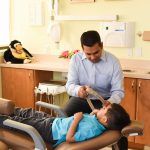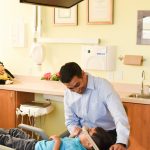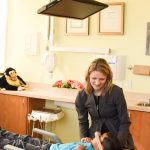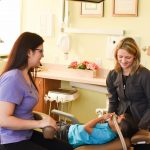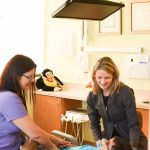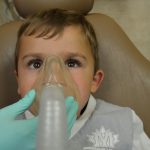Sedation and General Anesthesia
Nitrous Oxide Conscious Sedation
Many children feel comfortable and remain calm for treatment in a friendly setting. Some children, however, feel anxious and need more than just a gentle and calm approach to feel at ease. Nitrous Oxide or “laughing gas” sedation provides a very effective and easy way for children to cope with dental treatment. Nitrous Oxide/Oxygen is a blend of two gases, Oxygen and Nitrous Oxide. When inhaled it has a calming and anxiety reducing effect and pain-relieving qualities, most children do not laugh during this sedation, contrary to its coined term. After the conclusion of the appointment, the gas is eliminated from the body following 100% oxygen administration, normal breathing also eliminates Nitrous Oxide from the body. The gas is non-addictive, mild, easily taken and quickly eliminated from the body. During treatment your child will remain conscious and keep all their natural reflexes. Most children respond well to dental treatment with Nitrous Oxide, however for some children, it may not provide enough of an anxiety reducing effect. The potential variables that may pose limitations will be discussed in detail at the consultation appointment.
- Dr. V explaining to Leo how the “magic nose” will feel
- You’re doing a great job!
- What are you watching buddy?
- Dr. K administering nitrous oxide to Leo
- Leo feeling the squishy magic nose
- Monitoring how Leo is doing
- Dr. K and Nevila kindly supporting Leo
Oral Conscious Sedation
Sedative medication taken by mouth can help to increase cooperation and reduce anxiety associated with dental treatment. Once the medication is administered in the office, and your child shows signs of reduced anxiety and sedation they are ready for treatment. Most children feel drowsy and may drift into a light sleep while maintaining their natural reflexes.
The benefits of oral sedation are reduced anxiety, pain reduction and altered perception of time. Children remain at a fall risk until the medication is metabolized. Risks, benefits and alternatives to oral sedation treatment will be discussed at your child’s consultation visit.
General Anesthesia (Sleep Dentistry)
Depending on a child’s age, level of cooperation and dental condition, general anesthesia may be recommended to deliver treatment in a safe and comfortable manner. General anesthesia is recognized as a safe and effective way to treat children who have limited comprehension or those that are uncooperative and require dental care that is technically difficult to deliver. General anesthesia is administered via inhalation and/or intravenously by a certified Medical Physician Anesthesiologist. All necessary precautions are taken to protect the patient during general anesthesia. All members of the medical anesthesia team are trained to monitor your child closely and manage any potential complications that may arise. Risks, benefits and alternatives to treatment are discussed prior to treatment at your child’s consultation visit.
- William trying on the mask used for general anesthesia
- Mask used to administer general anesthetic agents

